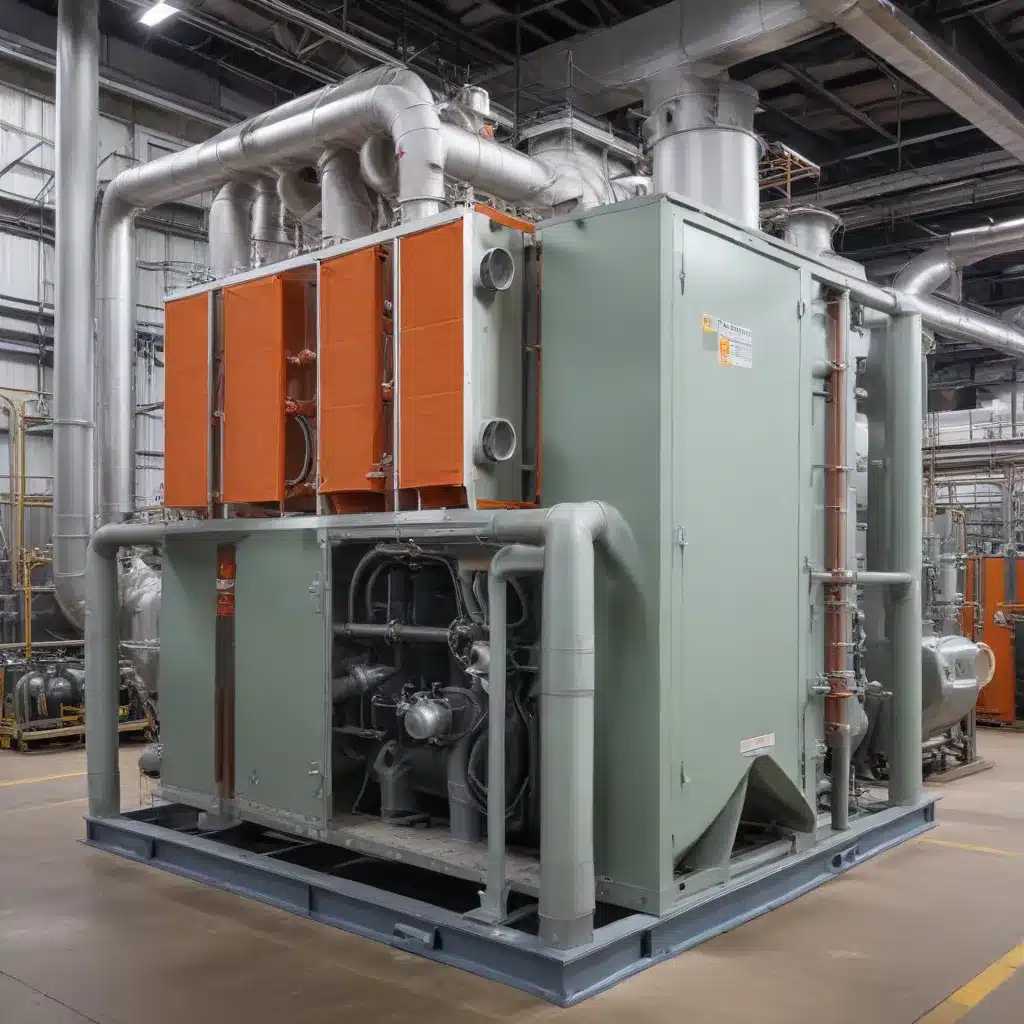
As a seasoned expert in the field of air-cooled heat exchangers, I’m excited to share practical tips and in-depth insights on how to optimize the performance of these critical components for waste heat recovery in industrial processes. Air-cooled heat exchangers play a pivotal role in enhancing energy efficiency and sustainability across a wide range of industries, from power generation and manufacturing to oil and gas refineries.
Understanding the Importance of Waste Heat Recovery
Waste heat, a byproduct of various industrial processes, represents a significant untapped energy source that can be harnessed to improve overall system efficiency and reduce environmental impact. By recovering and repurposing this waste heat through strategically placed air-cooled heat exchangers, industries can:
- Improve Energy Efficiency: Reclaiming waste heat and converting it into usable energy, such as steam or hot water, can dramatically reduce the primary energy required to power industrial operations.
- Enhance Sustainability: Waste heat recovery helps minimize the carbon footprint of industrial facilities by reducing reliance on fossil fuels and cutting greenhouse gas emissions.
- Reduce Operating Costs: Utilizing waste heat lowers the amount of energy that must be purchased from external sources, resulting in substantial cost savings over time.
Optimizing Air-Cooled Heat Exchanger Design for Waste Heat Recovery
Designing air-cooled heat exchangers for effective waste heat recovery requires a thoughtful, multifaceted approach. Here are some key considerations:
Selecting the Appropriate Heat Exchanger Type
There are several types of air-cooled heat exchangers, each with its own advantages and applications. Some of the most common options include:
- Fin-Tube Heat Exchangers: These feature finned tubes that maximize heat transfer surface area, making them well-suited for high-volume waste heat recovery applications.
- Plate-Fin Heat Exchangers: Offering exceptional thermal efficiency, plate-fin designs are often used in compact, space-constrained industrial settings.
- Spiral-Wound Heat Exchangers: Providing a large surface area-to-volume ratio, spiral-wound heat exchangers can handle high-pressure, high-temperature waste heat streams.
The selection of the appropriate heat exchanger type should be based on factors such as the characteristics of the waste heat stream, available space, required heat transfer capacity, and overall system constraints.
Enhancing Heat Transfer Efficiency
Maximizing the thermal efficiency of air-cooled heat exchangers is crucial for optimizing waste heat recovery performance. Some strategies to enhance heat transfer include:
- Optimizing Fin Design: Carefully selecting fin spacing, thickness, and materials can improve air-side heat transfer coefficients and reduce pressure drop.
- Improving Air Flow: Implementing measures such as fan optimization, duct design, and air flow management can ensure uniform air distribution across the heat exchanger.
- Employing Innovative Coatings: Advanced surface coatings and treatments can reduce fouling, enhance wettability, and improve overall heat transfer.
Addressing Fouling and Corrosion Challenges
Air-cooled heat exchangers are susceptible to fouling and corrosion, which can significantly impair their performance over time. Proactive maintenance and the selection of appropriate materials and coatings are essential to mitigate these issues, including:
- Regular Cleaning and Inspection: Implementing a comprehensive preventive maintenance program to clean heat exchanger surfaces and monitor for signs of degradation.
- Corrosion-Resistant Materials: Selecting heat exchanger components made from stainless steel, copper, or other corrosion-resistant alloys to withstand the harsh operating environment.
- Anti-Fouling Coatings: Applying specialized coatings that resist the buildup of contaminants and minimize the impact of fouling on heat transfer efficiency.
Integrating Waste Heat Recovery Systems
Effectively integrating air-cooled heat exchangers into a comprehensive waste heat recovery system is crucial for maximizing the overall benefits. Key considerations include:
- Process Integration: Strategically placing heat exchangers at optimal locations within the industrial process to capture waste heat at the highest possible temperatures.
- Heat Storage and Distribution: Incorporating thermal energy storage solutions and distribution networks to efficiently utilize the recovered waste heat throughout the facility.
- System Monitoring and Controls: Implementing advanced monitoring and control systems to continuously optimize the performance of the waste heat recovery system.
Practical Tips for Maintaining and Optimizing Air-Cooled Heat Exchangers
Proper maintenance and optimization of air-cooled heat exchangers are essential for sustained waste heat recovery performance. Here are some practical tips:
- Regularly Clean and Inspect: Implement a routine cleaning schedule to remove debris, dirt, and other contaminants from the heat exchanger surfaces. Inspect for signs of corrosion, fouling, or other degradation.
- Monitor Air Flow and Pressure Drop: Regularly measure air flow and pressure drop across the heat exchanger to identify any changes that may indicate the need for cleaning or maintenance.
- Optimize Fan Performance: Ensure that the fans are operating at their optimal efficiency, adjusting fan speed or replacing worn components as necessary.
- Maintain Proper Airflow: Ensure that the heat exchanger is installed in a location with unobstructed airflow, and address any issues that may impede air circulation.
- Implement Predictive Maintenance: Leverage advanced monitoring and analytics techniques to predict the onset of potential issues, allowing for proactive maintenance and minimizing unplanned downtime.
Embracing the Future of Air-Cooled Heat Exchangers
As the demand for energy efficiency and sustainable industrial practices continues to grow, air-cooled heat exchangers will play an increasingly vital role in waste heat recovery and industrial process optimization. By embracing the latest advancements in heat exchanger design, materials, and control systems, industrial facilities can maximize the performance and long-term reliability of these critical components, ultimately driving towards a more sustainable and cost-effective future.
For more information on how https://www.aircooledheatexchangers.net/ can help you optimize your air-cooled heat exchanger performance for waste heat recovery, please don’t hesitate to reach out to our team of experts.

